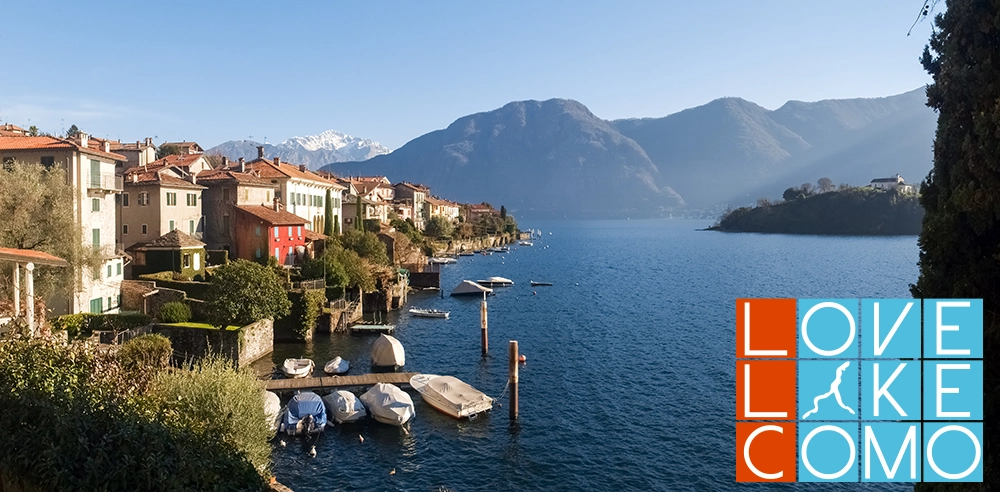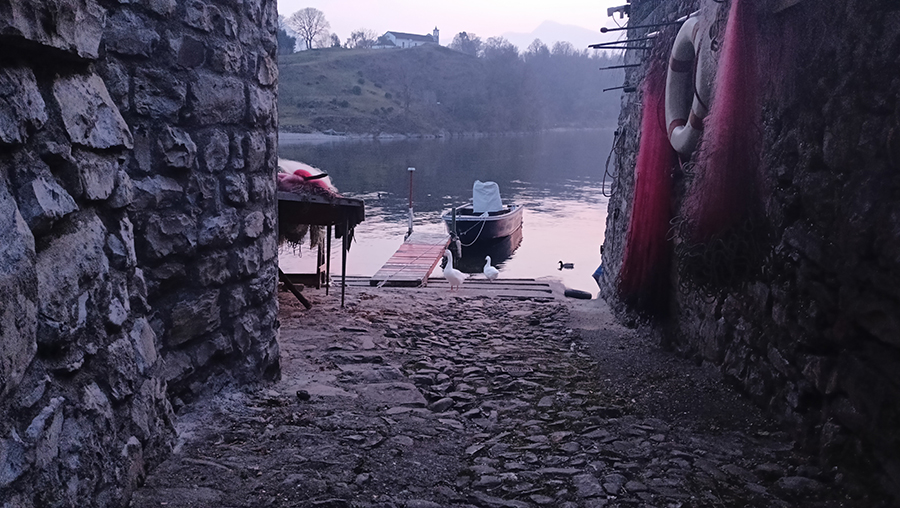
Visit Sala comacina - Lago di Como
The old village of Sala Comacina lies below the parish church of San Bartolomeo. It is necessary to go down some steep steps to finally explore the tiny streets that hardly wind between old houses and fragments of walls. This was ancient Sala Comacina: a handful of picturesque houses stacked between the church and the shore, arisen on the ruins of a medieval fortification.
Sala Comacina lies on a small, well-sheltered gulf: its waters are well suitable for fishing and the fertile soils allows the growth of vines and olive trees. One of the village streets still bears the name Via Jasca, a Celtic word meaning fish market. Today it is a quiet, romantic village where the ancient tradition of fishing is still alive; you can breathe a unique atmosphere here, as you stroll through the narrow alleys, admiring the nets hanging out to dry and the boats moored ready for the next beat..
What to do, to visit and to see in Sala Comacina
The old town
On the highway Statale Regina at number 49 there is a small parking lot. Find here a road that goes down to the landing stage, it’s marked by a special sign. As you arrive at the shore, a fabulous landscape will open up right in front of you: from here on, the Isola Comacina is the undisputed star of this amazing scenery.
You should know that the island was once entirely inhabited and there were as many as nine churches before it was destroyed in the year 1169. It was completely burned, razed to the ground and every single stone thrown into the lake.
The island used to be inhabited by proud warriors; they were so fierce that they were feared even by the famous Frederick Barbarossa; the destruction of the island was a ruthless revenge by Como for a past betrayal. No more bells would be rung, no stone would be set on stone, no one would ever be an innkeeper there again, or else pain of violent death: this was the imperial decree wanted by Barbarossa.
Want to read his incredible story? Click Here.
Well, you will now see at your right a small square which takes you to an elegant club located at the entrance of the private historic Villa Ernst; at your left starts instead the lakeside promenade that leads to a bathing area: a sand-filled terrace with direct access to the lake via stone steps.
The lakeside promenade momentarily stops here; you have to cross the old village to get back to the lakefront, but along the way you will be delightfully surprised by the beauty of its narrow alleys. You then come out into the small square Piazza Matteotti, where it is still possible to see a precious fresco from the 1100s depicting a Madonna and Child.
Take again the lakeside promenade and you will reach a tiny square with a batèl at its center, the Lake Como's traditional historic boat. Immediately after it, a large lawn set up as a Lido offers relaxation areas and refreshments. We did not find this to be the ideal place for swimming, being right in front of the commercial harbor and without a comfortable access to the lake.
The walk continues to Villa Beccaria; as you stroll through the old walls of the palace, the walkway is a real blast from the past. Surely an ancient fortification existed here.
Villa Beccaria
Giulio, son of Cesare Beccaria and uncle of the famous Alessandro Manzoni, used to host here his jurist and philosopher friends. The villagers called this villa la Puncia, a dialect term for its position leaning toward the lake.
After Giulio's death, the villa passed to Cesare Cantù and his daughter Rachele. At that time a literary and cultural salon, known with the name Accademia dei pedanti, would meet here. Intellectuals such as Antonio Fogazzaro and other prominent figures of Italian culture were used to participate.
Essayist Raffaello Barbiera defined these places as "more wonderful (places) than ever, trees grown like protective titans, avenues memorial to illustrious and cherished footsteps."
Ossuccio
Leaving Sala Comacina, you go back to the highway Statale Regina and reach Ossuccio. Be careful on the highway; in some sections there is no sidewalk and it can be dangerous.
You immediately come across the small church of S.S. Giacomo e Filippo, built overhanging the lake probably at the end of the 11th century: a little treasure that surely deserves a visit inside.
Walking about 500 meters southwards, you will see the beautiful bell tower of the church of Santa Maria Maddalena, an enchanting historical structure built between the 11th and 12th centuries, with a Hospitium attached, from which the village took its name. Spectacular is the Gothic-style belfry, one of the symbols of Lake Como.
Right in the garden below is located the Ossuccio’s lido, a large and welcoming lawn with a bar-restaurant. It is very well-kept and equipped with every comfort: the right place for an aperitif overlooking the lake and the Isola Comacina.

Visit Isola Comacina
Isola Comacina is the only island of Lake Como. Starting at least from the late Roman Empire, the island has been a fortified stronghold. After the end of the Roman dominion, it became a strategic military place for the Goths first, then for the Byzantines, who surrendered to the Lombards in 588. In Middle Ages, it became a powerful political and religious place which dominated and ruled the central area of Lake Como. So, after having been a fortified military centre, in Middle Ages the small island became a religious centre so important to become Parish and so powerful to contest, as an “Ante Litteram Protestant” centre, all instructions coming from the Pope. To this Parish belonged the many convents and churches spread on the central area of Lake Como, which Isola ruled either religiously or military.
Therefore, the fate of these villages were double-linked to the vicissitudes of the Parish of Isola which, at the time of the Communes, politically sided Milan against Como that, vice-versa, sided the German Emperor Fredric 1st nicknamed the Red-bearded. And it was due to this alliance with Milan the cause its destruction in 1169, when the island was pulled down to the ground and set on fire to never be inhabited ever after.
How to visit Isola Comacina? Read Here
.webp)
Museum, villas, monuments and sights
Events, festivals and music in Lecco
Best treks and scenic hiking trails in Sala Comacina
If you want to go trekking, hiking or nordic-walling on Lake Como and discover trails above the Sala Comacina mountains, we recommend the team HIKING LAKE COMO. Francesca and Mario are professional and passionate certified guides, as well as enthusiastic local people. Contact here.

How to get to Sala Comacina